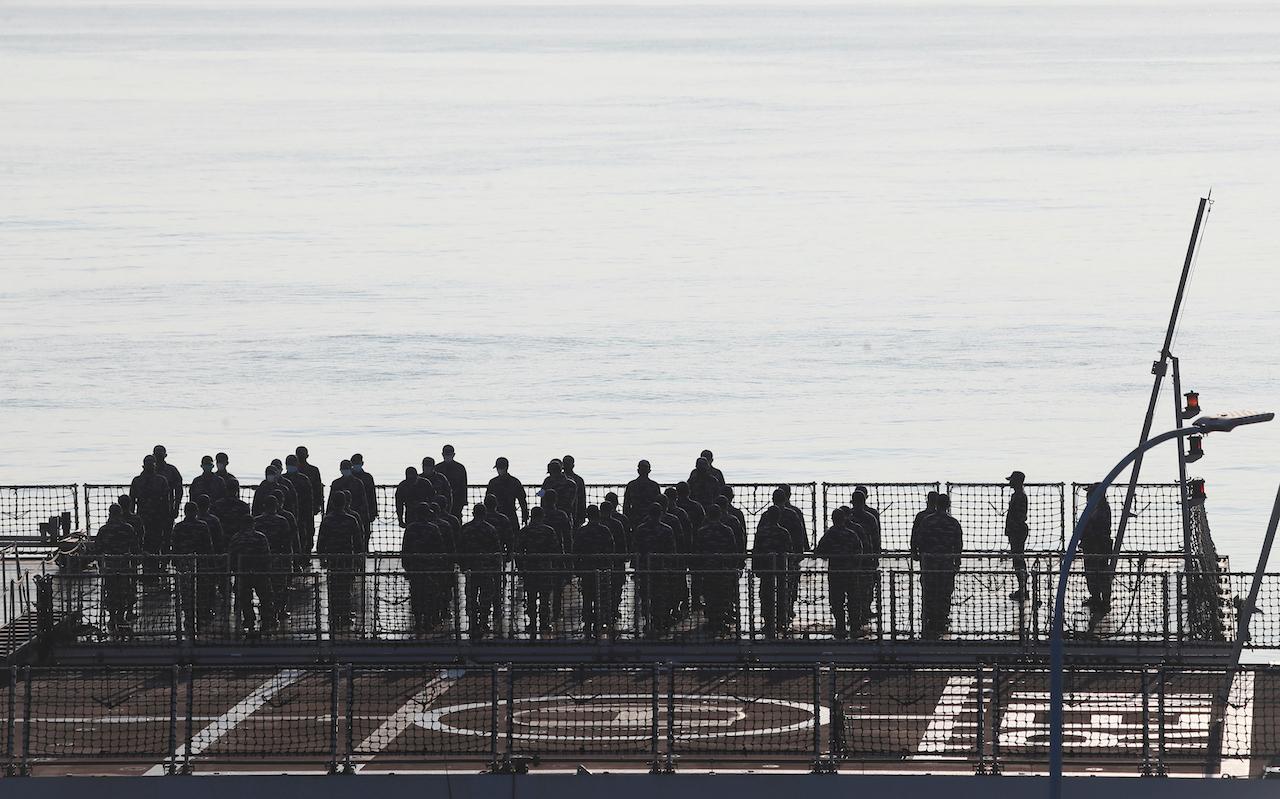From search and rescue to salvage effort for Indonesian submarine
Authorities have not given an official explanation for the accident, but said that the submarine may have suffered a blackout and left its crew unable to resurface.
Just In
The hunt for a missing Indonesian submarine with 53 crew turned into a salvage effort Sunday after recovered debris suggested it broke apart as it sank off the coast of Bali.
Warships, planes and hundreds of military personnel had led a frantic search for the KRI Nanggala 402 since it disappeared this week during training exercises, hoping for a miracle rescue before its known oxygen reserves ran out.
But the navy acknowledged Saturday that pieces of the submarine, including items from inside the vessel, had been retrieved.
They declared that it had sunk, effectively ending any chance of finding survivors.
Among the items recovered was a piece of the torpedo system and a bottle of grease used to lubricate periscopes.
They also found a prayer mat commonly used in Indonesia, the world’s most populous Muslim-majority nation.
The relatives of First Lieutenant Muhammad Imam Adi, a 29-year-old father of a young son, clung to hope.
“My wish now is that my son and all the crew can be found,” Adi’s father Edy Sujianto said from his home on Java island.
“My son had wanted to become a soldier since he was a child. That was his dream.”
President Joko Widodo described the missing sailors as Indonesia’s “best patriots”.
“All Indonesians convey their deep sadness over this incident, especially to the families of the submarine crew,” he said.
‘Folding accordion’
Authorities have not given an official explanation for the accident, but said that the submarine may have suffered a blackout and left its crew unable to resurface.
Navy chief Yudo Margono discounted an explosion, however, saying Saturday that the evidence suggested the submarine came apart as it was crushed by water pressure at depths of more than 800m, well below what the German-built Nanggala was built to withstand.
“Submarine hulls are pressurised… but when they’re breached then water would come flooding inside,” said Wisnu Wardhana, a maritime expert at Indonesia’s Sepuluh Nopember Institute of Technology.
“Can you imagine if water with that kind of pressure hits people?”
Retired French vice-admiral Jean-Louis Vichot earlier told AFP that a submarine’s steel shell could break “like a folding accordion” when it hits depths way beyond its limits.
On Sunday, the search team focused on pinpointing the sub’s exact location.
Authorities have warned that any salvage operation would be risky and difficult in the deep waters.
Singapore’s MV Swift Rescue – a submarine rescue vessel – has arrived to aid in the recovery effort, the navy said Sunday.
Neighbouring Malaysia, as well as the US, India and Australia, were among the nations helping in the search.
Search vessels, reconnaissance aircraft and submarine rescue ships have been deployed to scour a zone of about 34 sq km.
Lost contact
The submarine – one of five in Indonesia’s fleet – disappeared early Wednesday while it was scheduled to do live torpedo training exercises off Bali.
The crew asked for permission to dive. It lost contact shortly after.
Later, search teams spotted an oil spill where the vessel was thought to have submerged, pointing to possible fuel-tank damage, and a catastrophic accident.
So far, authorities have not commented on questions about whether the decades-old vessel was overloaded, but they have said that the submarine – delivered to Indonesia in 1981 – was seaworthy.
The model has been used by more than a dozen navies around the world.
But investigators would look at the Indonesian submarine’s age as a potential factor, analysts have said.
The disaster was among a string of fatal submarine accidents over the past few decades.
Among the worst was the 2000 sinking of the Kursk, the pride of Russia’s Northern Fleet.
That submarine was on manoeuvres in the Barents Sea when it sank with the loss of all 118 aboard. An inquiry found a torpedo had exploded, detonating all the others.
Most of its crew died instantly but some survived for several days before suffocating.
Subscribe to our newsletter
To be updated with all the latest news and analyses daily.
